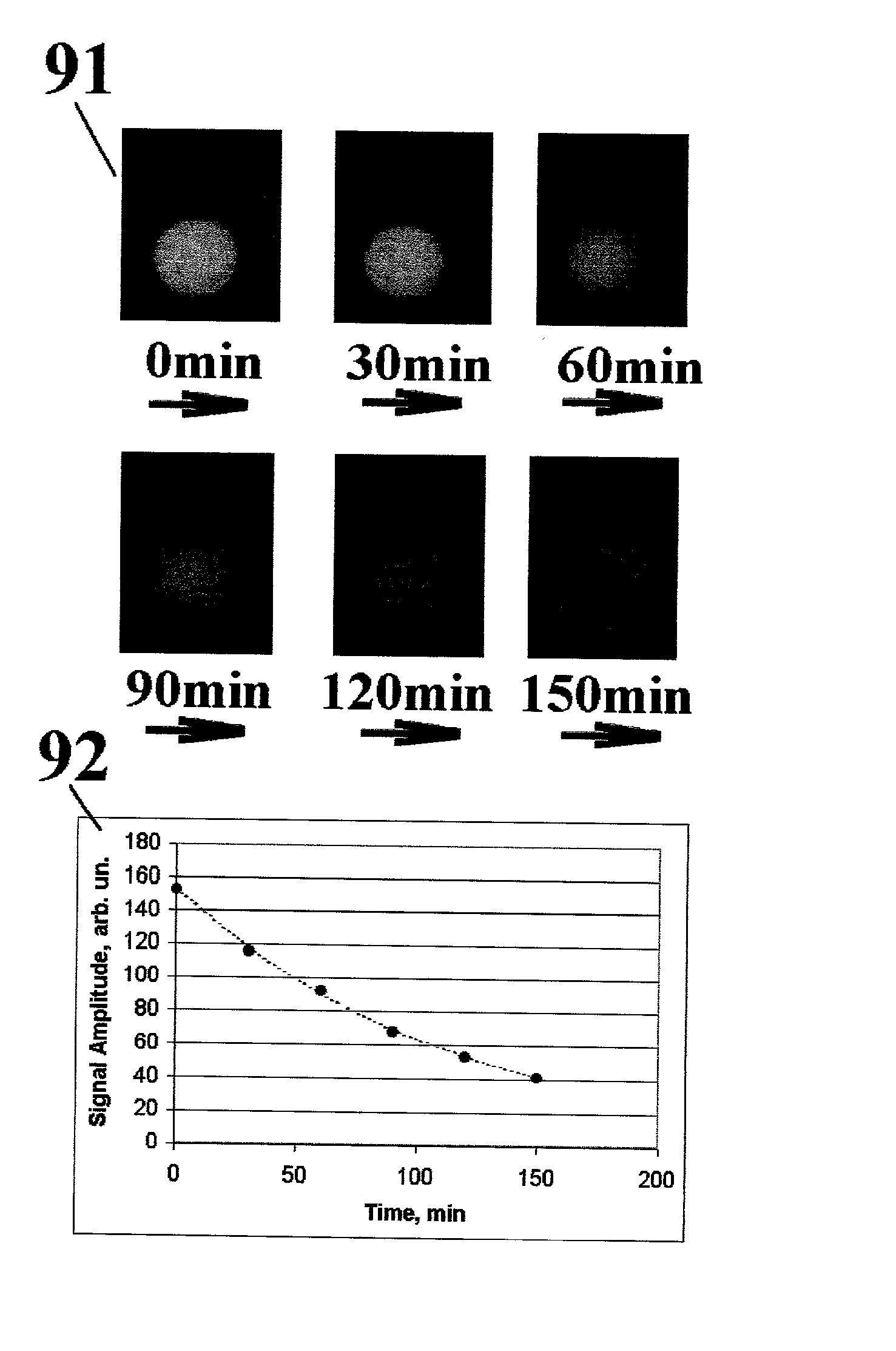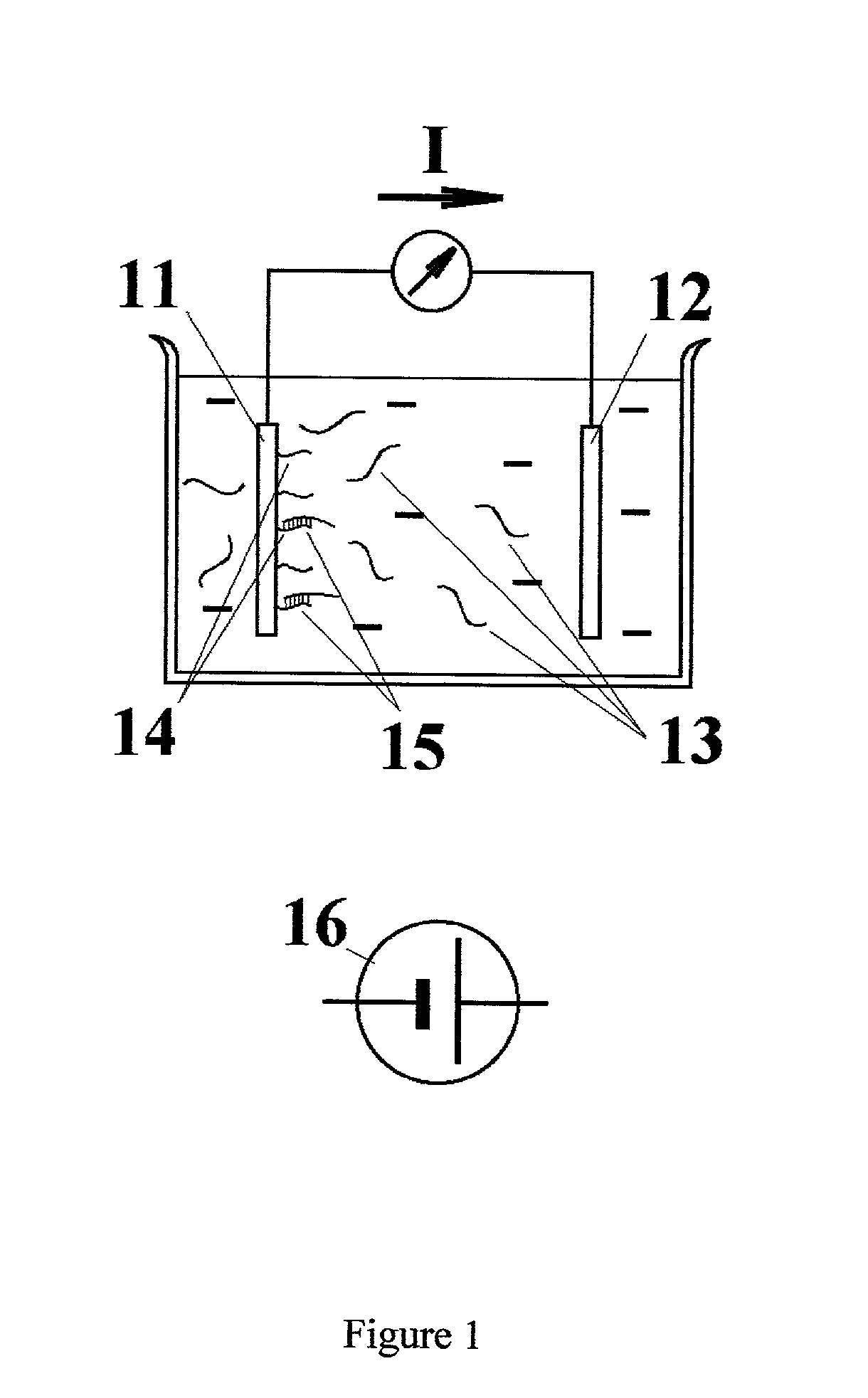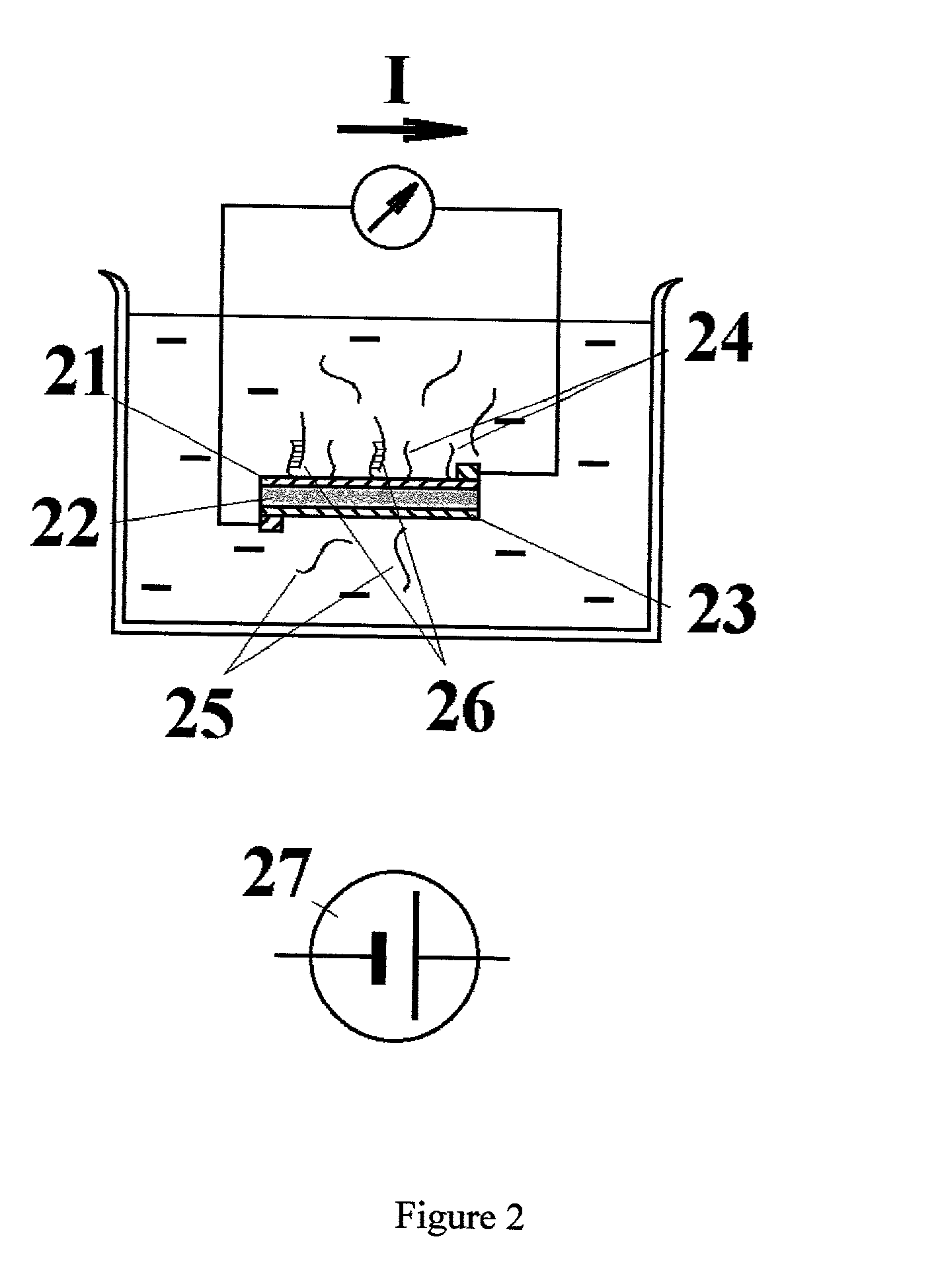Method and microelectronic device for multi-site molecule detection
a microelectronic device and detection method technology, applied in chemical methods analysis, instruments, material analysis, etc., can solve the problems of increasing the complexity and cost of the entire process, increasing the throughput of sequencing experiments, and serious disadvantages, so as to increase the detection sensitivity and increase the magnitude of electronic signals , the effect of increasing the detection sensitivity
- Summary
- Abstract
- Description
- Claims
- Application Information
AI Technical Summary
Benefits of technology
Problems solved by technology
Method used
Image
Examples
example 1
Benefits of Miniaturization Pixel Units
[0119] Introduction of a new type of electronically sensitive array sensor for detection and identification of molecular structures can address issues of both increasing sensitivity and performing analysis of many sampling spots in parallel. The sensitivity of detection of electrical current by a conventional bioelectronic sensor, in which the electrode and amplifying electronics are separated, is often limited to 10-100 pA. The detection sensitivity can be increased if the sensitive electrode and amplifying electronics are miniaturized and manufactured on a single sensor substrate, similar to what is known in the art for optical image array sensors, see Kempainen, "CMOS Image Sensors", EDN Access (October, 1997); Suni, "Custom Photodetector Arrays Meet Design Challenges", Laser Focus World (1994); and Suni, 7th Annual IEEE International Conference on Wafer-Scale Integration (1995), all three articles being incorporated by reference herein. Ind...
example 2
[0121] FIG. 7 shows a prototype of an apparatus that was used in preliminary studies of the integrated array sensor for detection of biomolecules in solution. In FIG. 7, the array sensor 71 is shown with a hybridization chamber 72 set up on the sensitive area of the sensor. The array sensor was interfaced with commercially available "camera-on-board" circuitry 73 capable of digitizing and transferring data to a personal computer where the data can be further processed, visualized and stored. Arrangement of the sensitive pixels of the sensor in a 2D array allows for the capture, processing and presentation of data the way it is known in the art for image sensing array devices.
example 3
[0122] A commercially available CMOS array sensor for imaging applications was modified by 5'-end thiohexyl modified oligonucleotides, immobilized on the sensor's surface as an array of 3.times.3 test sites. A set of two probes and one target oligo were used in these studies. The oligos were custom synthesized by AlphaDNA (Montreal QC, Canada). The probe oligos were 5'-end thiohexyl modified for immobilization on metal interconnects on the surface of the array sensor. One probe oligo, Probe-1, had the sequence 5'-Thiol-ggaat aaaat tgatt cattt taaaa aaaaa-3', which is homologous to a 30-base long fragment of Interleukin-6, Locus HSU62962 (7p21). The other probe oligo, Probe-2, had the sequence 5'-Thiol-cctgg ccacc gcctg ctgct gctgc ggggg-3', herein representing a 30-base long fragment from the Locus CACNL1A4 (19p13). The presence of a sulfide group at the end of the thiol-modified oligo enables the attachment of the oligo molecule to a metal component and interconnects on the sensiti...
PUM
 Login to View More
Login to View More Abstract
Description
Claims
Application Information
 Login to View More
Login to View More - R&D
- Intellectual Property
- Life Sciences
- Materials
- Tech Scout
- Unparalleled Data Quality
- Higher Quality Content
- 60% Fewer Hallucinations
Browse by: Latest US Patents, China's latest patents, Technical Efficacy Thesaurus, Application Domain, Technology Topic, Popular Technical Reports.
© 2025 PatSnap. All rights reserved.Legal|Privacy policy|Modern Slavery Act Transparency Statement|Sitemap|About US| Contact US: help@patsnap.com



